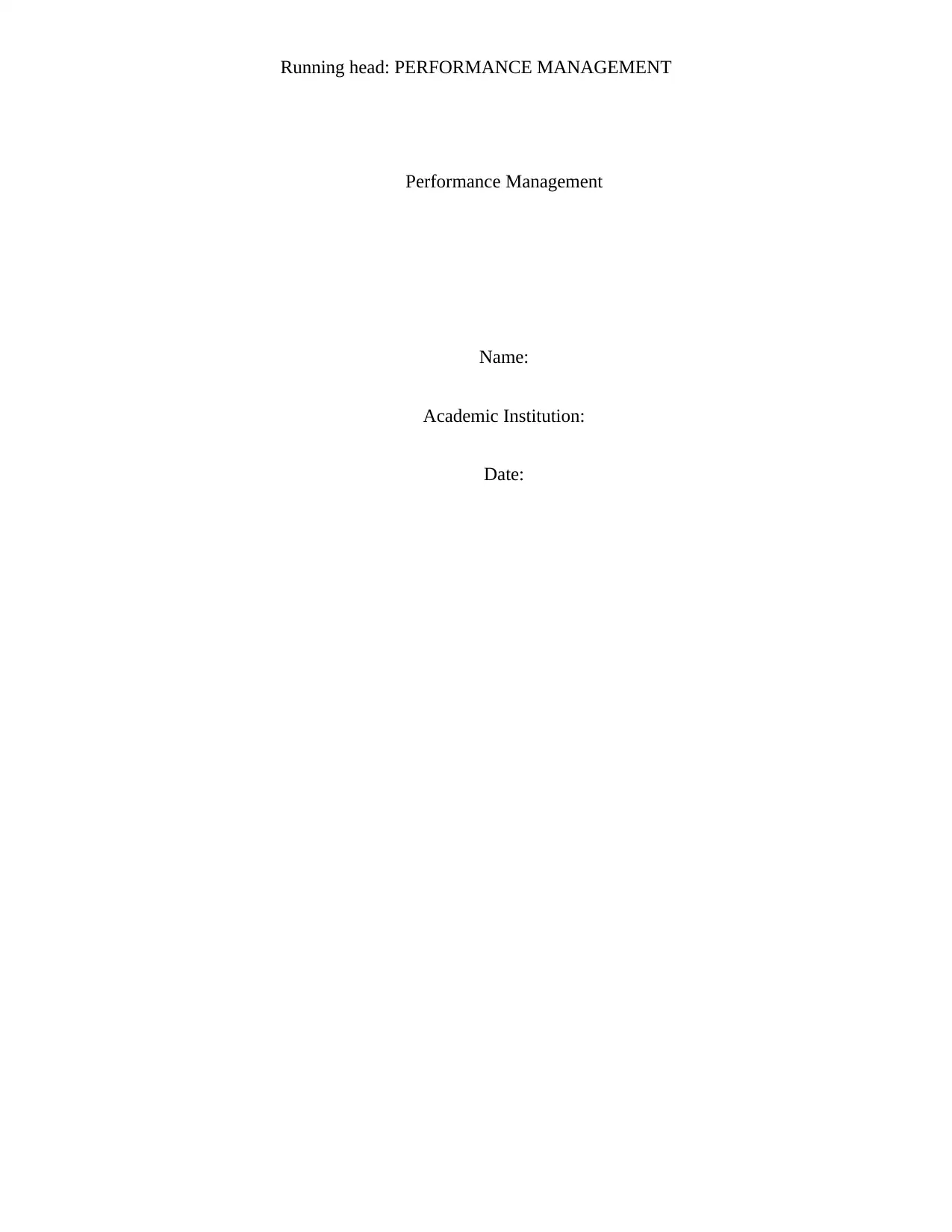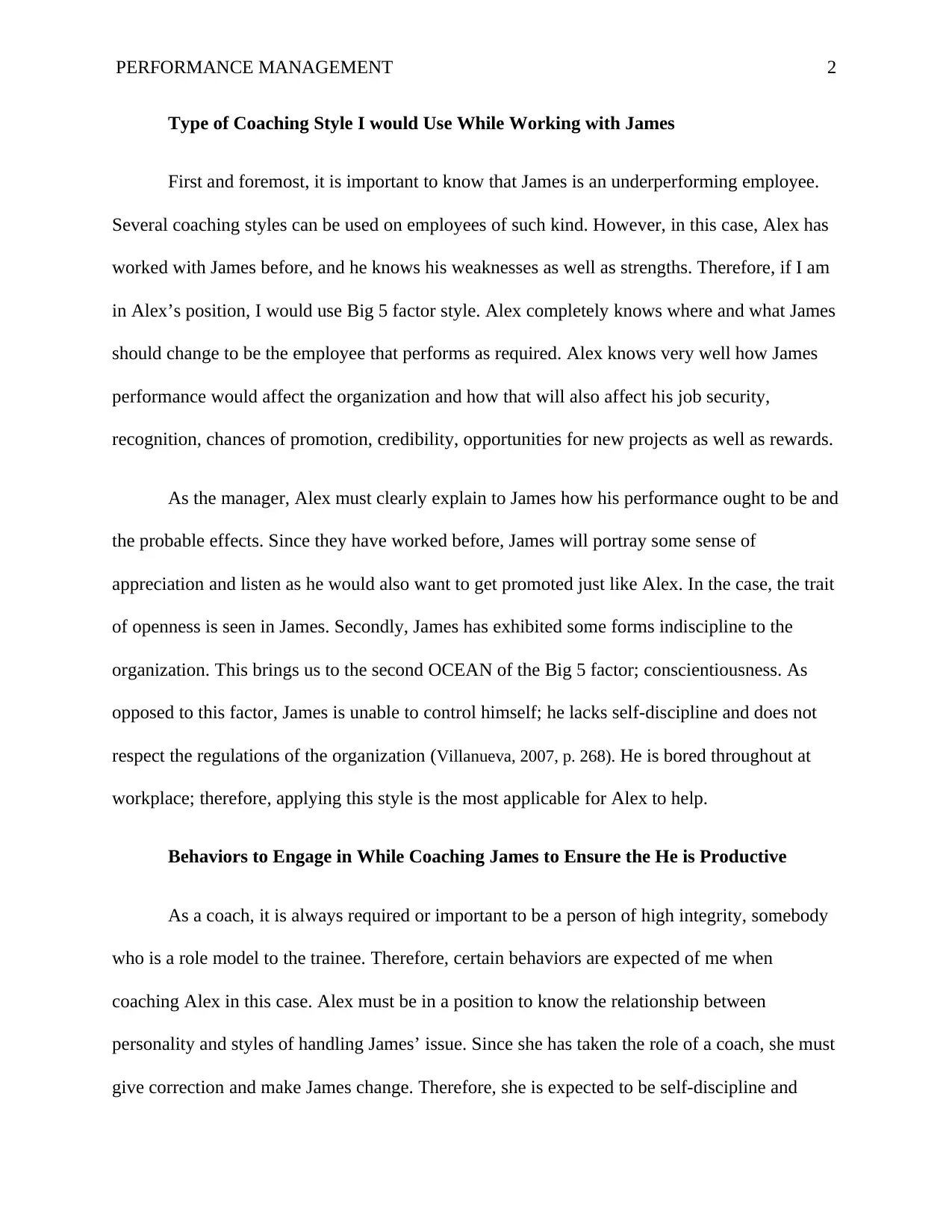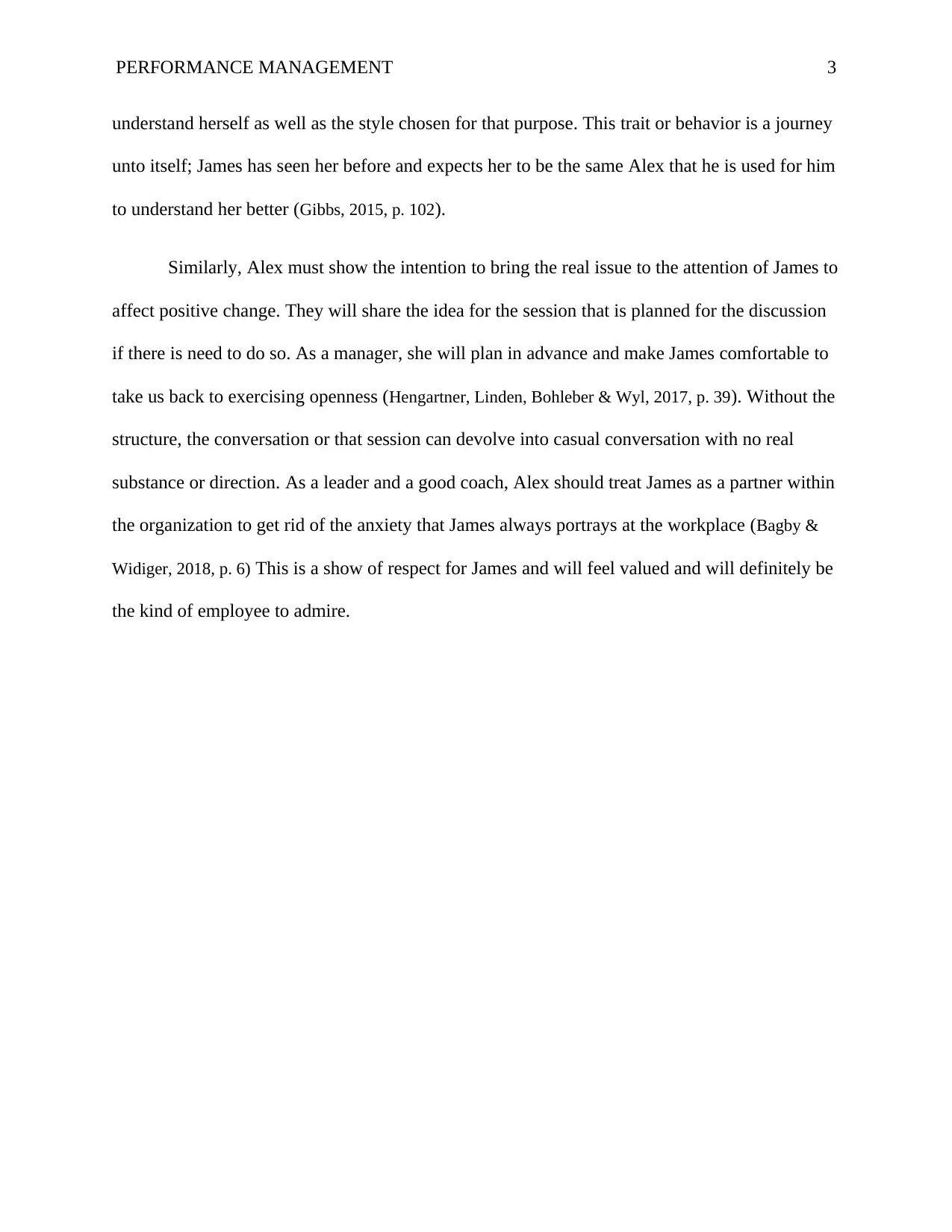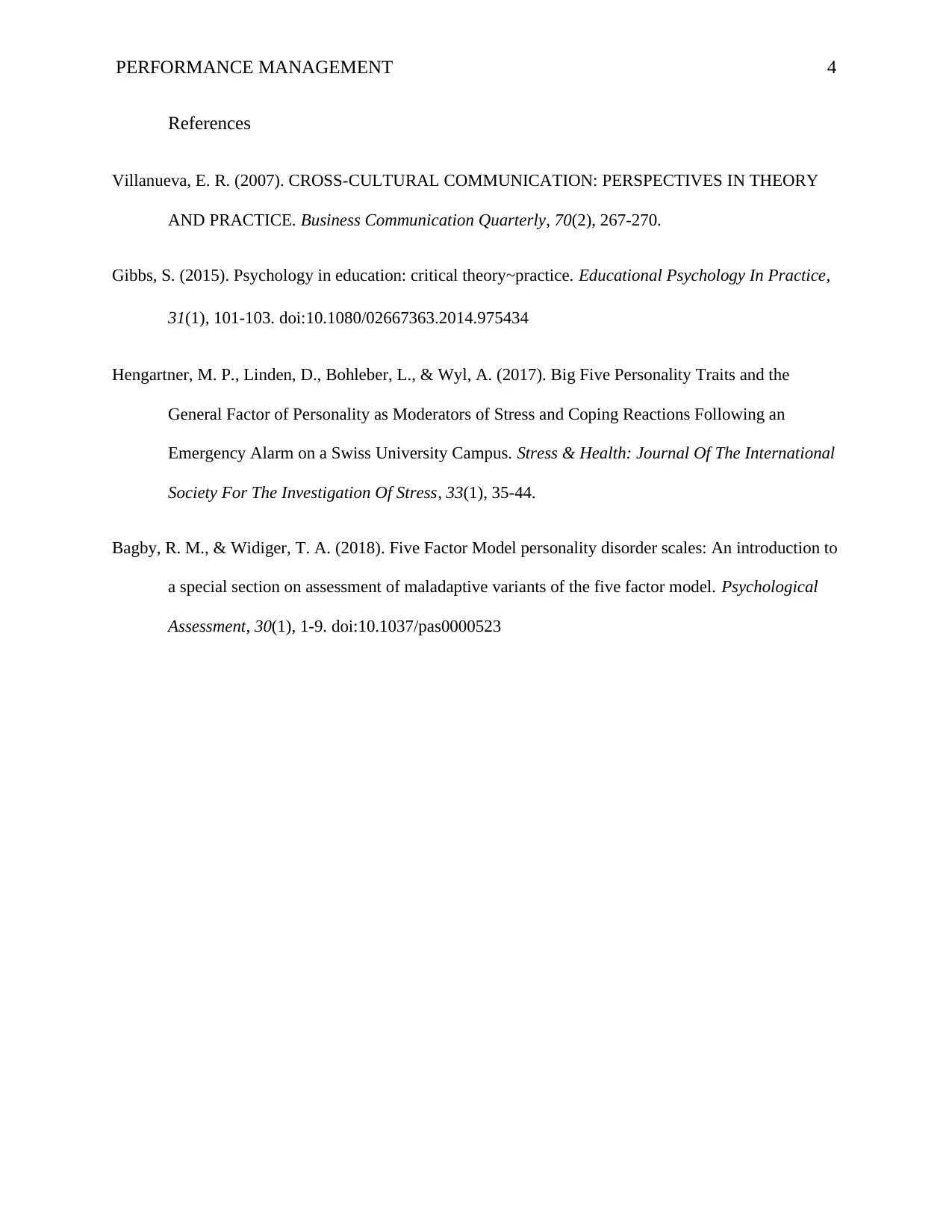Performance Management: Coaching James at Jeffries, Smith, and West
VerifiedAdded on 2023/06/13
|4
|800
|480
Case Study
AI Summary
This case study focuses on how Alex, a newly promoted manager at Jeffries, Smith, and West, can effectively coach James, an underperforming associate. The solution recommends using the Big 5 factor coaching style, leveraging Alex's prior experience with James to address his weaknesses and highlight the impact of his performance on his career and the organization. Key behaviors for Alex include maintaining integrity, demonstrating self-discipline, and fostering open communication to build trust and encourage James to improve his conscientiousness and overall productivity. By treating James as a partner and addressing his anxieties, Alex can create a supportive environment that motivates him to meet performance expectations. This document is available on Desklib, a platform offering a wide range of study resources for students.
1 out of 4










![[object Object]](/_next/static/media/star-bottom.7253800d.svg)